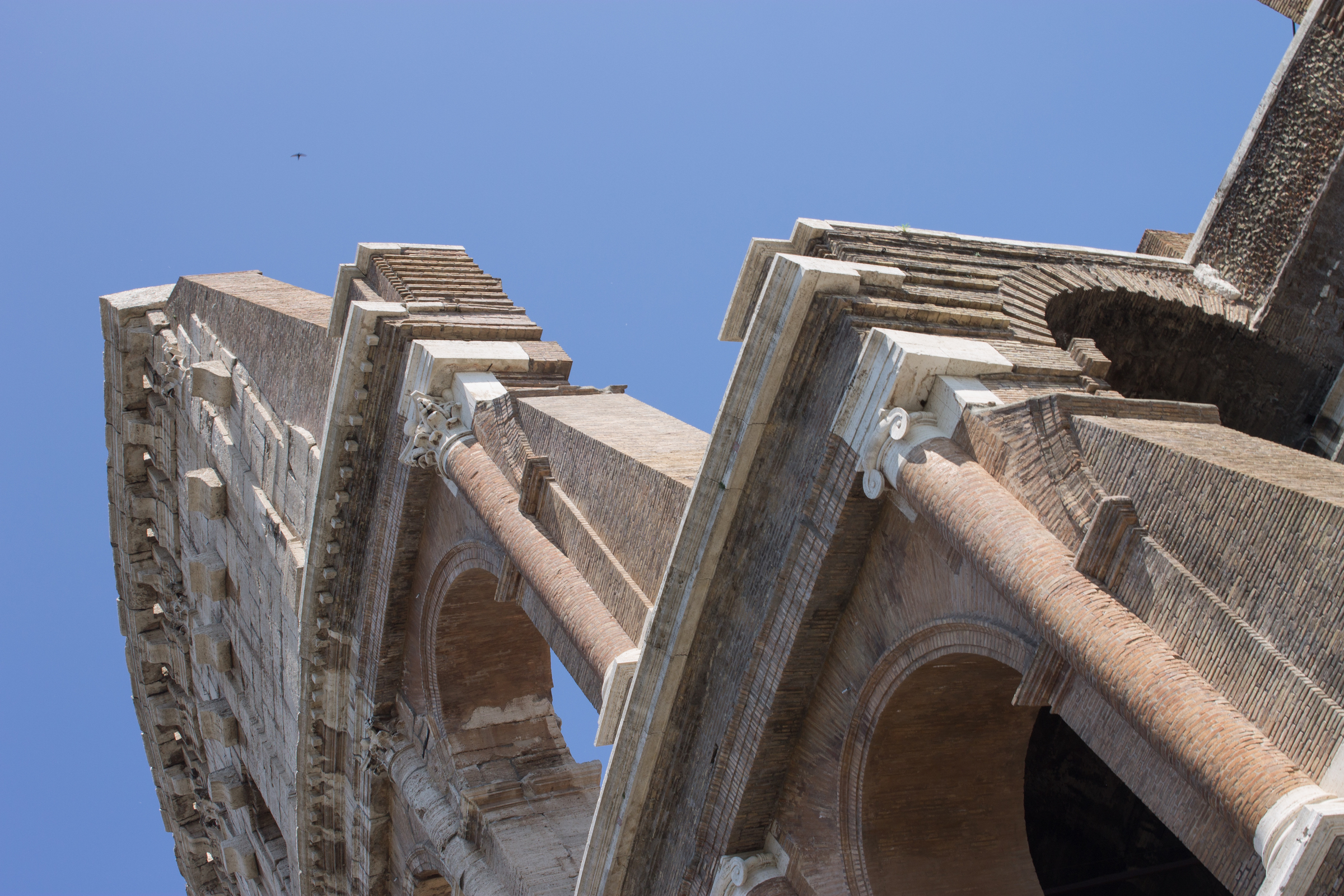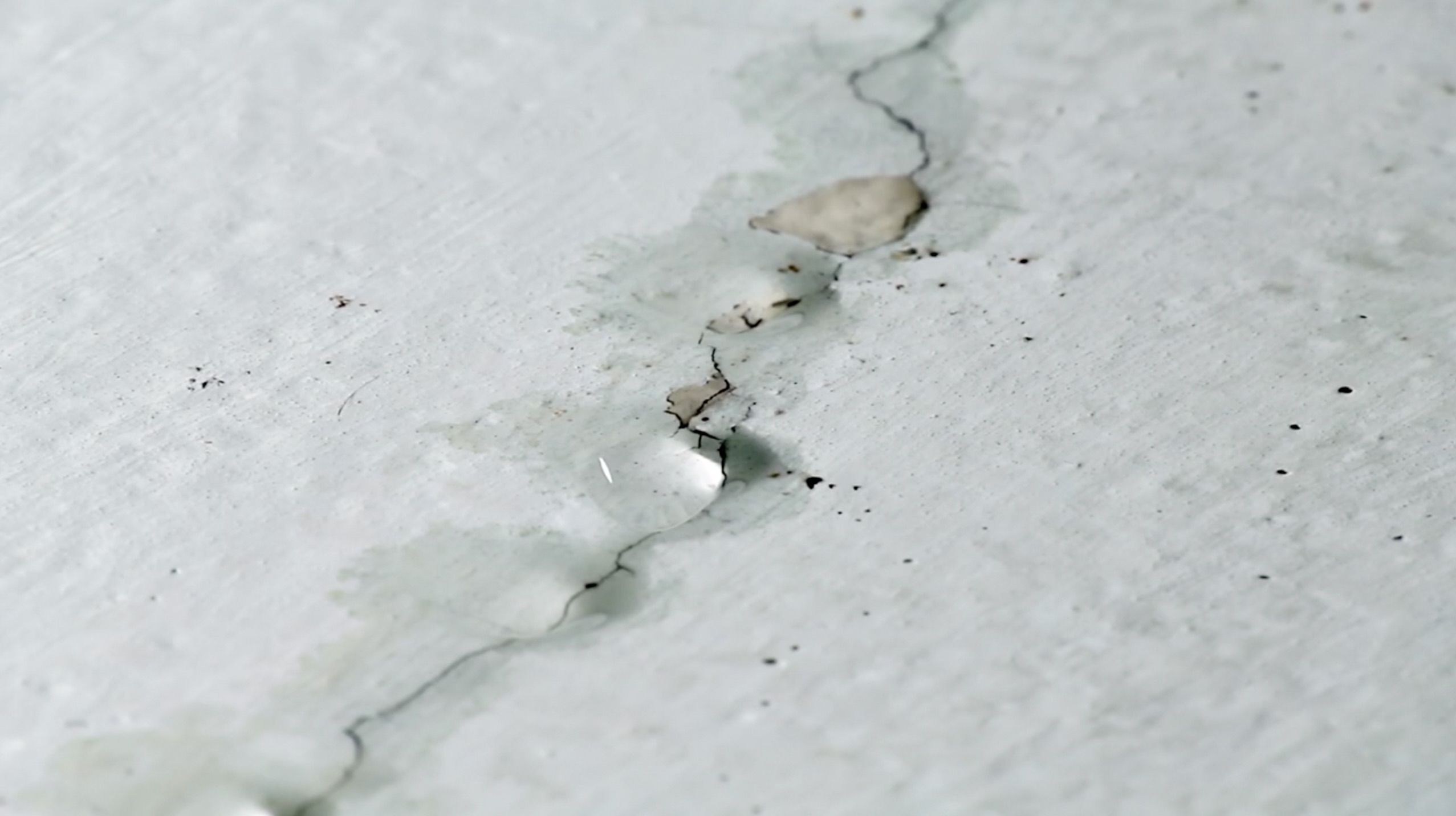Moscow, Idaho in June: it is very hot, even at night, not air-conditioned in the dorm where I’m staying for an environmental humanities conference. I’m thinking: fans. On a bright Saturday afternoon, I get a call from my husband in Philadelphia: it’s pouring here, he says, watching a leak track across the second-floor ceiling. As he arranges pots underneath, we hit a panic note as homeowners: what if the ceiling collapses in our new home?
A leak in the roof brings on a special kind of attendance and anxiety: a reminder that the outdoors is always potentially indoors, the elements never truly at bay. If you don’t do something and soon, the ceiling softens and the leak spreads; water always finds a way through.
This everyday worry permeates the installation series Dark Waters, C. Rhee’s response to Hideo Nakata’s Japanese horror film of that title:
My art installation…began as a carefully placed drip from my studio ceiling, at the time located in a trailer (the sort used in overcrowded public schools) on a university campus. The moment water seeped through the ceiling, the leak marked the school site as an everyday space of possible horror and dysfunction. Constructed yet also really seeping water, the leak caused visitors to question whether the space was an artwork or a living, breathing problem. It was this disturbance of certainty into openings for horror and anxiety that became the heart of the Dark Water works.Eve Tuck and C. Rhee, “Exemplar Chapter 33: A Glossary of Haunting,” in Handbook of Autoethnography, ed. Stacey Holman Jones, Tony E. Adams and Carolyn Ellis, (Walnut Creek: Left Coast Press, 2013), 639–58.
The persistence of this leakage, the deliberately evoked unease about whether it is “artwork or a…problem” play on a disquiet we work hard to keep at bay: the impossibility of fully knowing, containing, controlling our worlds, our immediate surroundings, ourselves.
The concept of leaking evokes these differentially situated vulnerabilities, an image of environmental threat and a historical repository for remnants that do not disappear, even as we hurry to plug or patch them over, trying to protect boundaries, to cordon off a separate, coherent self. As evoked in this book, learning demands a different scenario: happens not in containers but in gaps, cracks, places of leakage, in the spaces between our actions and our conscious understandings, where who we think we are and what we think we know recedes, maybe even dissolves—and so opens unexpected portals in our psyches and our relationships: enticing, and dangerous. Rhee’s installation helps me think about academic institutions as spaces where borders do not hold: the outside cannot be kept out, the visitor too involved with the leakage; where, as a Black man puts it to white teachers, “if I am not what I’ve been told I am, then it means that you’re not what you thought you were either!”James Baldwin, “A Talk to Teachers,” 1963; repr. in The Price of the Ticket, Collected Non-Fiction 1948–1985 (New York: Saint Martin’s Press, 1985).
Half a century later, in a letter to his son, Ta-Nehisi Coates again highlights the false, dangerous belief in boundaried selves by repeating the phrase “people who believe they are white.”Ta-Nehisi Coates, Between the World and Me (New York: Spiegel & Grau, 2015). Leakage beads through the cracks in classrooms, in colleges visibly riven at this moment when young people here and across the country are calling out the hauntings of these spaces, buildings named for those identified as racists, colonizers: how is it possible to teach in, of, about these ambiguous and haunted spaces—for all students and for social justice?
In their “Glossary of Haunting,” Tuck and Rhee probe the nature of haunting, warn us to resist “righting wrongs.” As an educator, I take this personally:
Haunting lies precisely in its refusal to stop. Alien (to settlers) and generative for (ghosts), this refusal to stop is its own form of resolving. For ghosts, the haunting is the resolving, it is not what needs to be resolved. Haunting aims to wrong the wrongs, a confrontation that settler horror hopes to evade.Tuck and Rhee, “Glossary,” 642.
I am struggling with how to teach to and for students in varying positions in relation to settling and colonialism, vulnerability and trauma. Without the seduction of trying to “right wrongs,” what might it mean to teach for social justice? Tuck and Rhee unsettle even this question: “Social justice is a term that gets thrown around like some destination, a resolution, a fixing.…The promise of social justice sometimes rings false, smells consumptive, like another manifest destiny.”Tuck and Rhee, “Glossary,” 647.
In this chapter, I reflect on how the concept of leaking might help me and others, pedagogically, to work from and with students’ and our own vulnerabilities; to use the often unwelcome seeping through of what we don’t know and may well fear as a font for learning; and, in light of this, to reconsider what we teach for.
Metaphorically, political leaks show us how leakage can exacerbate fragmentation within communities, even as new possibilities emerge. Geologically, boulders split by ice allow water to seep in and freeze, shattering the core. Not often (ever?) desired, leaks are inevitable; dangerous, disruptive, potentially transformative.
I look at these processes in teaching and learning, first through “enactments” in a Multicultural Education class, then through a session in a prison and its aftermath back on the college campus. In each of these spaces boundaries are asserted, riven, realigned, sometimes opening the way for deeper engagements, sometimes demanding a fortitude that some among us—students and teachers—may not have, at least individually. Leakage into pedagogy is also in play here, as I and my co-teachers look to diffuse authority while also finding ourselves taking it up in unexpected ways.
Throughout, I explore what kinds of learning can happen in “a site that is simultaneously a ruin and a remake, is haunted and haunting, is horrific and very plain…”Tuck and Rhee, “Glossary,” 646. Where a “ruin” might become a “remake.”


